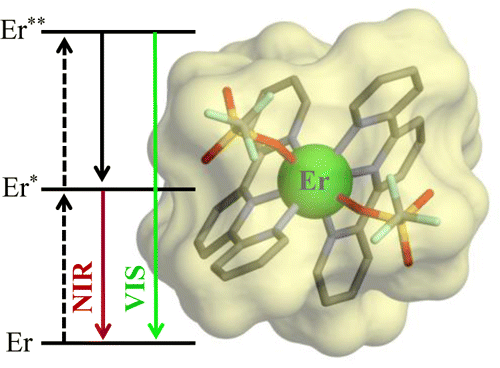-
Taming Lanthanide-Centered Upconversion at the Molecular Level

Yan Suffren, Bahman Golesorkhi, Davood Zare, Laure Guénée, Homayoun Nozary, Svetlana V. Eliseeva, Stéphane Petoud, Andreas Hauser and Claude Piguet
Inorganic Chemistry, 55 (20) , 2016, p9964-9972


DOI:10.1021/acs.inorgchem.6b00700 | unige:89168 | Abstract | Article HTML | Article PDF | Supporting Info
|
|   |
Considered at the beginning of the 21th century as being incompatible with the presence of closely bound high-energy oscillators, lanthanide-centered superexcitation, which is the raising of an already excited electron to an even higher level by excited-state energy absorption, is therefore a very active topic strictly limited to the statistical doping of low-phonon bulk solids and nanoparticles. We show here that molecular lanthanide-containing coordination complexes may be judiciously tuned to overcome these limitations and to induce near-infrared (NIR)-to-visible (VIS)-light upconversion via the successive absorption of two low-energy photons using linear-optical responses. Whereas single-ion-centered excited-state absorption mechanisms remain difficult to implement in lanthanide complexes, the skillful design of intramolecular intermetallic energy-transfer processes operating in multimetallic architectures is at the origin of the recent programming of erbium-centered molecular upconversion. |




